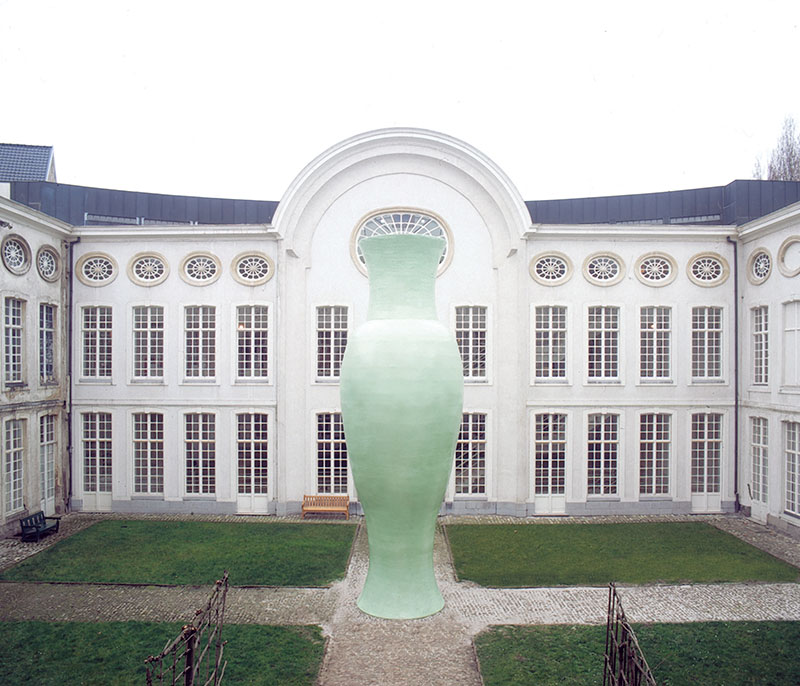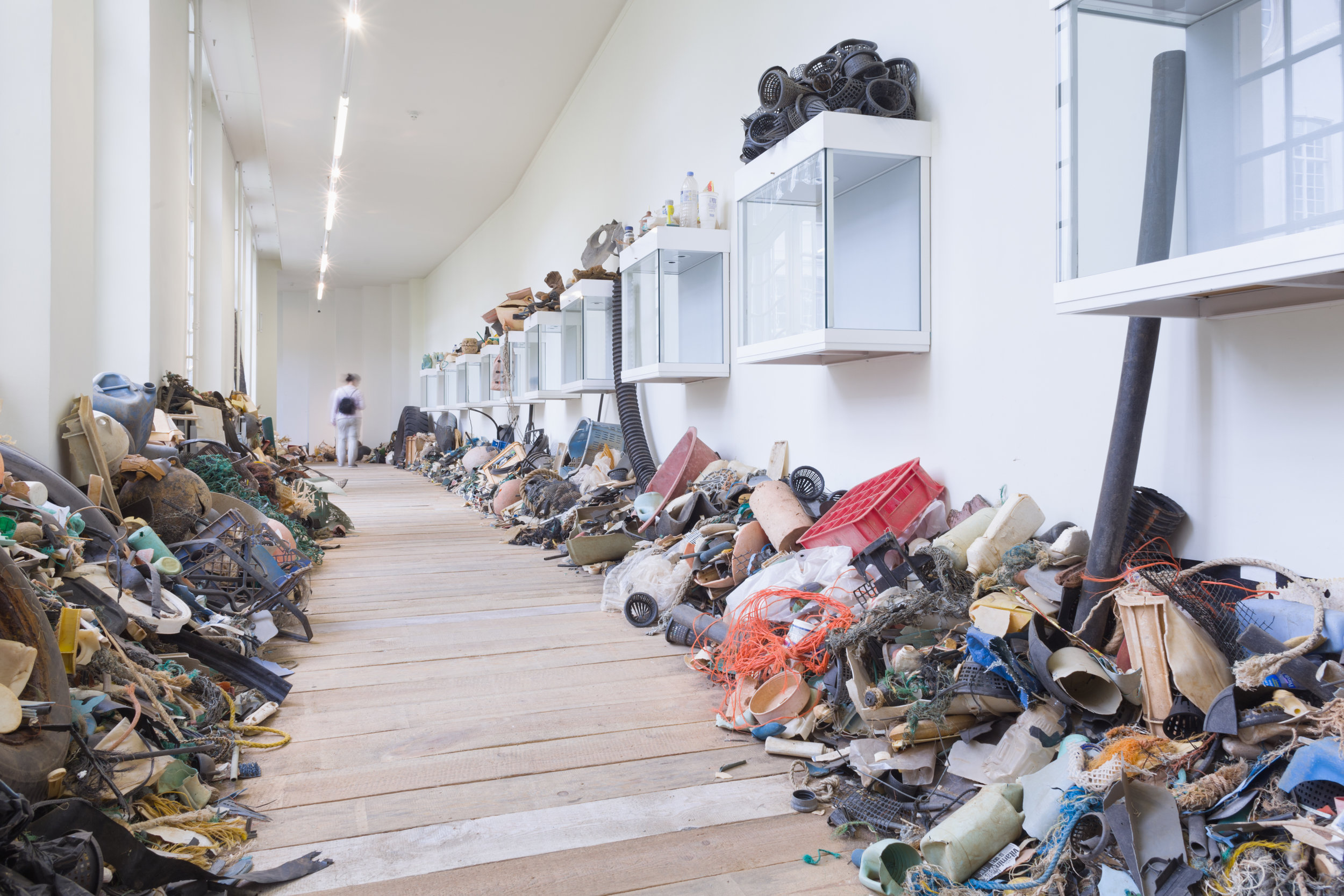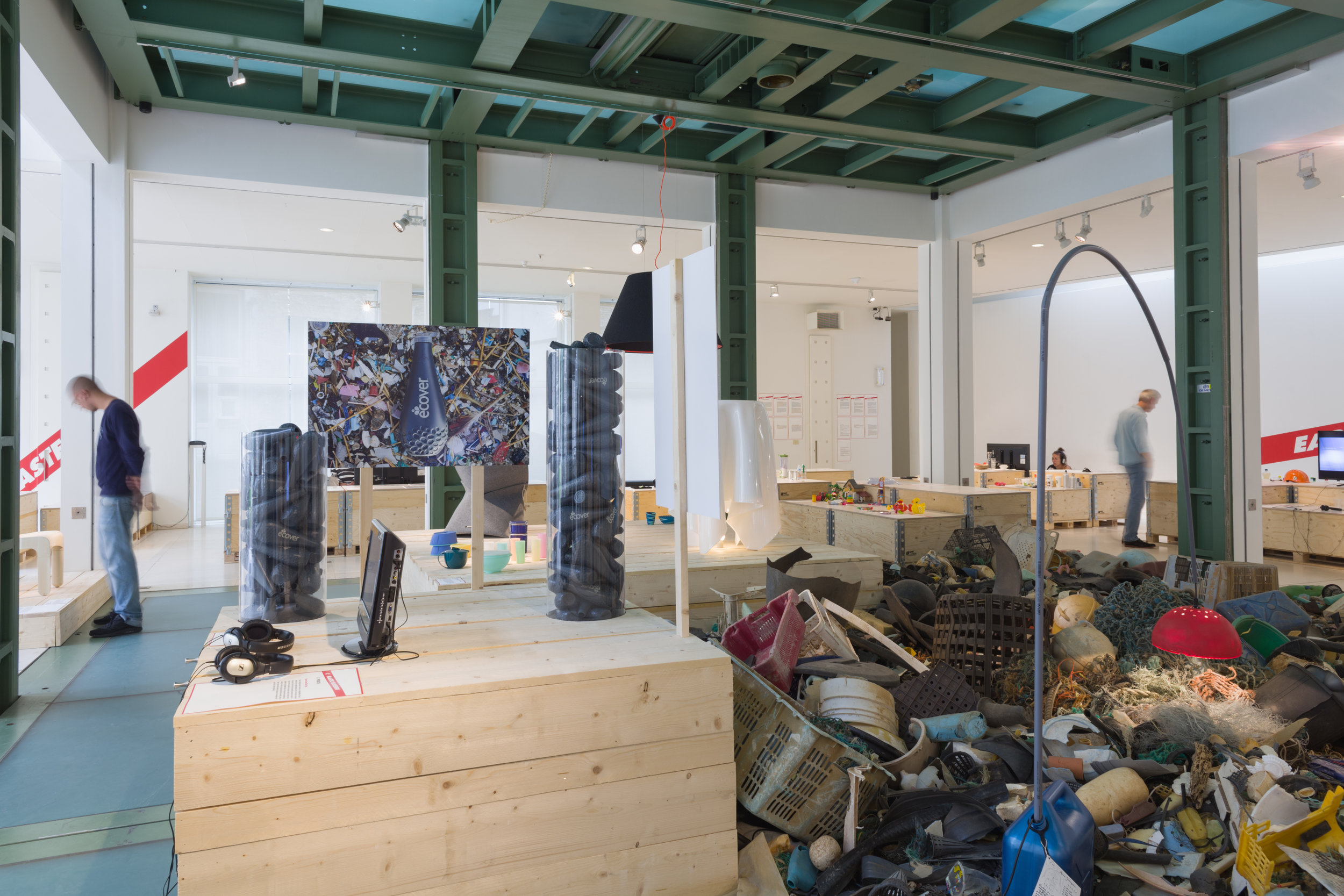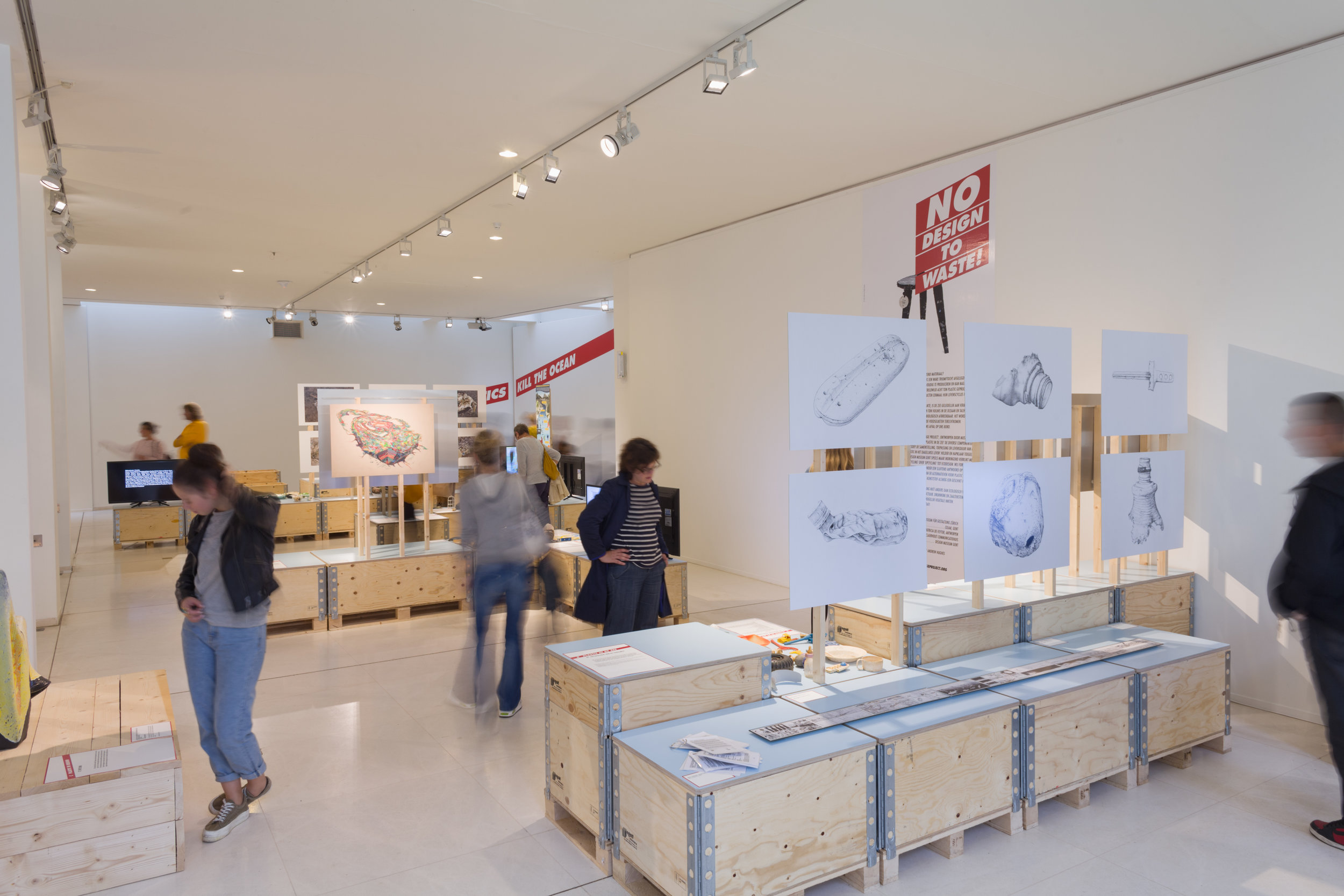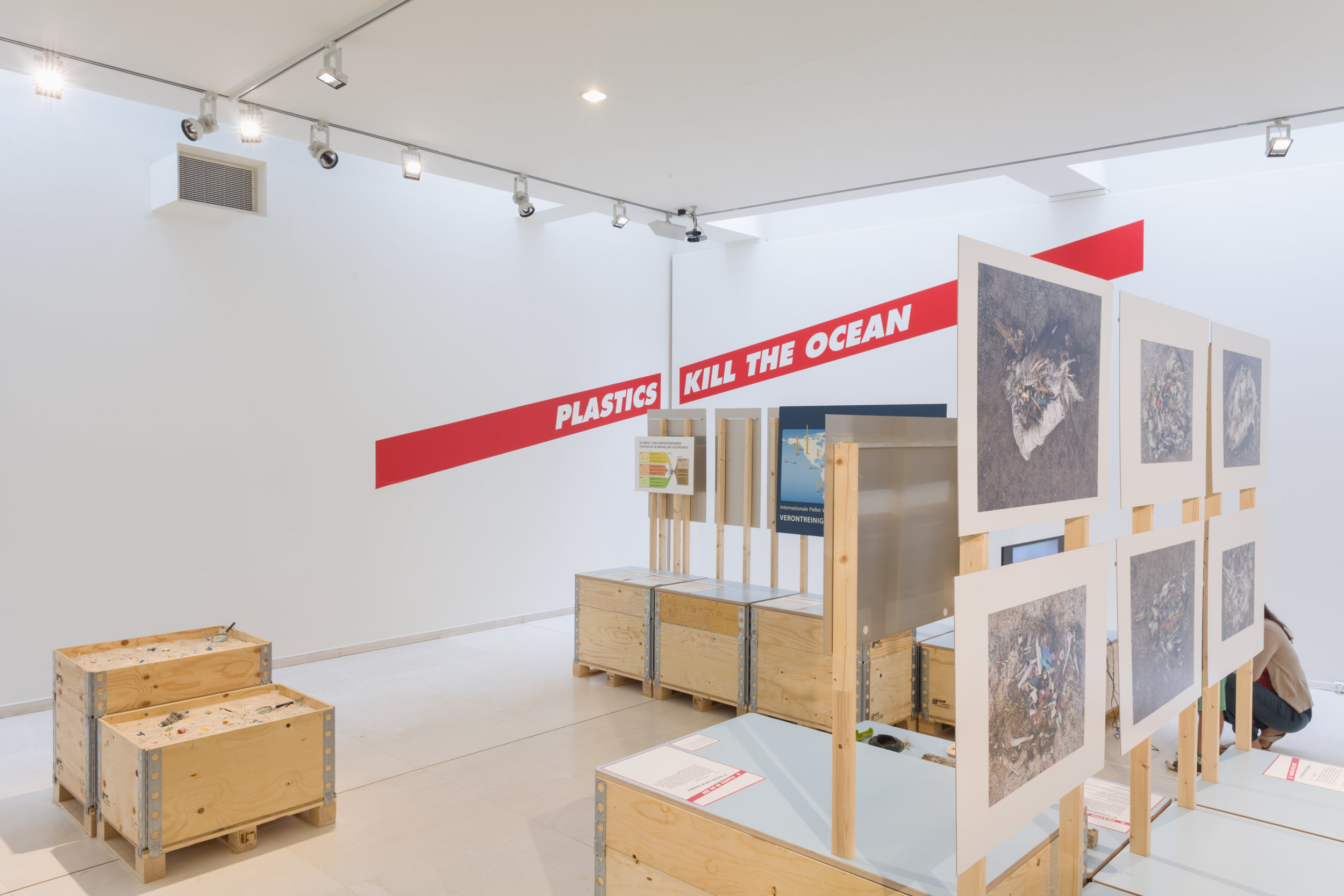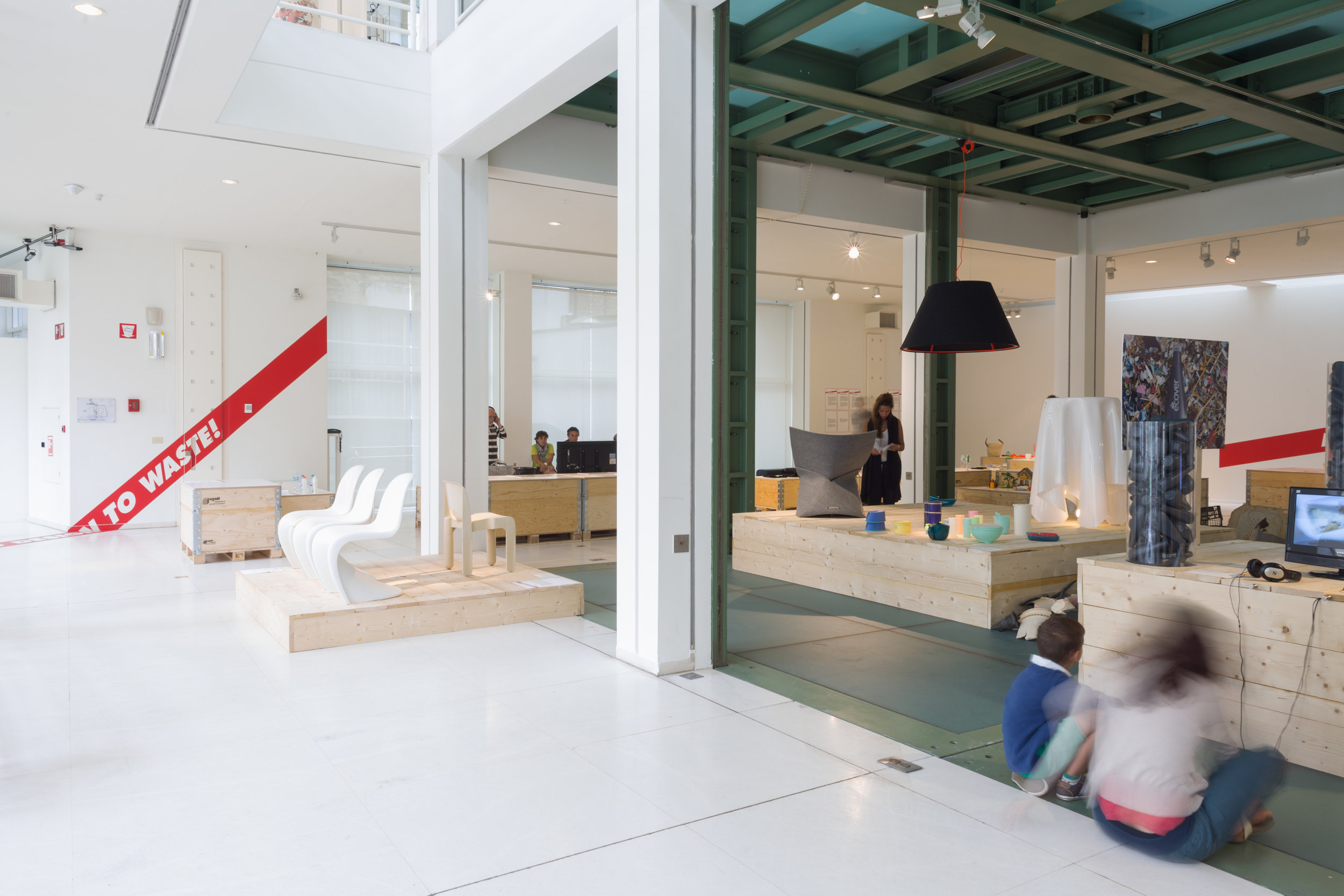Design Museum Gent
Gent, belgium
5 July – 12 October 2014
Our vast oceans are indecently filled with tons of plastic garbage. And it does not get better, on the contrary. The exhibition ‘Out to Sea? The Plastic Garbage Project’ created by Museum für Gestaltung Zürich, dissects the different components of this distasteful plastic soup.
Immediately the visitor is confronted by an immense heap of garbage.
He then continues his way via the different ingredients of this minestrone. The composition, application and life span of plastic materials are fed to the mind piece by piece.
Playful but insisting Design museum Gent enriches this instructive tale with a large portion of hopeful design, from recycling via upcycling to ecodesign. The story develops like a spider’s web that reaches beyond the museum walls. The visitor is encouraged to continue his discovery of ecodesign in the streets of Ghent and on the world wide web.
Confrontation
Design museum Gent formulates this exhibition like a confronting question, without imposing a definitive answer. Is a large production really that necessary? Are there alternatives for plastic? Can discarded plastic get a second life? Or is plastic still a suitable material? Controversy in a plastic mould?
An uneasy depiction
Immediately on entering the exhibition the visitor wades through a sea of plastic garbage. Staggering across a network of wooden jetties he discovers different islands where plastics live or revive. The drifter floats on an ever expanding wave, garbage all around him. There is no escape. It promises to be an uncomfortable exhibition, dotted with islands of peace covered in information and objects.
Ecodesign from Belgium
To the Swiss tale about plastic garbage and the different sorts of synthetics Design museum Gent adds his own story lines, presented on islands. In this third part contemporary Belgian designers show the many aspects of ecological plastic design. It spans from production over recycling, upcycling, conservation of plastic furniture to contemporary ecodesign. Every island has its own fitting lighting.
Five Islands
1. On Production island a piece of Tupperware is being followed from the first grain to the last grinding. Tupperware produces high quality plastics for food and recycles his own products into new containers.
2. Once stranded on the first Recycling island a plastic object is reduced to base material for the creation of a new object. The Belgian pioneers of recycling design Rudi Respeel and Bart Baccarne both create playful objects. On a fishing boat the British Studio Swine prepares the ‘Sea Chair’ from plastic soup. The youngbloods Bob Segers and Jonas Blondeel transform traffic signs from the E 19 highway into furniture. On the second Recycling island artist Gino Rizzi shows colourful beauty in a poetic maritime installation of a plastic underwater world.
3. Discarded objects receive a new life in the hands of zealous native designers on Upcycling island. The Ghent designer collective ‘Onbetaalbaar’ (priceless) creates a setting of new design objects especially for this exhibition.
4. Ecodesign can be found on an island a little further to the north in the Plastic Ocean, where design objects produced with a minimum of impact on the environment flourish. Several types of ecodesign are presented. The most exemplary type must be ‘cradle to cradle’ in which a sustainable product design is developed that goes beyond conventional recycling.
5. On arriving on Saved island one discovers the well-known chair ‘Universale’ (1965) that suffers from light and air. The old and new versions of the Panton Chair show clearly that the original plastic was not resistant to everyday use. A new plastic offers a chance of survival.
Quality Time in the Garden
Visitors can relax in the garden after this confronting exhibition. Bart Baccarne’s Bonk-benches, flowerstools and Chatbox are points of refuge for the weary wanderer.
